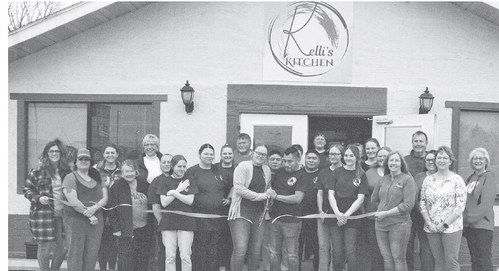State at crossroads on homelessness issue
BY DEAN MOSIMAN
WISCONSIN STATE JOURNAL
Despite promising efforts, the relentless trauma and indignities of homelessness remain a daily reality for perhaps 20,000 men, women and children in Wisconsin.
In booming Madison, the homeless live out of vehicles and tents, double up in apartments or motel rooms, or sleep outside on streets lined with posh bars and restaurants surrounding the majestic glow of the Capitol dome. Every day an average of 225 people, including 46 children, seek assistance at The Beacon homeless Day Shelter on Madison’s near east side.
In downtown Milwaukee, a tent city of the homeless has spread below a tangle of massive freeway overpasses in a city where 5,163 students in the state’s largest school district were homeless in 2018.
The La Crosse Collaborative to End Homelessness has identified 275 adults as homeless, a steady number for eight months. In Green Bay, a shelter helps thousands of homeless annually, with one in five between 18 and 24 years old, leaving advocates concerned about where those young people will be in their 30s and 40s. In Beloit schools, nearly 9% of the student population was homeless last school year.
Also deeply troubling is the striking racial disparity in homelessness in Wisconsin. Blacks account for 6.4% of the state population but 39% of those receiving homeless services in 2018. The disparity is even worse in Dane County, where blacks comprise 5.1% of the population but represent 53% of those receiving homeless services last year.
“It could happen to any of us,” said Joseph Volk, executive director of the nonprofit Wisconsin Coalition Against Homelessness, noting that many are a job loss, medical emergency or car repair bill away from losing housing. “We should not have people in our midst living in cars and tent cities. It’s just morally wrong.”
One way or another, society pays for homelessness, Volk said. Investments, especially in housing, actually save taxpayer money, studies show. A chronically homeless person costs taxpayers an average of $35,600 annually, but the expense is cut in half when that person is placed in housing with support services, according to the National Alliance to End Homelessness.
In the past two years, after a lack of leadership and inaction by both parties spanning decades, Wisconsin created an Interagency Council on Homelessness, followed by an action plan that called for a “Housing First” approach and recommendations to more than double the state’s comparatively meager $3.3 million in annual direct funding for homeless programs.
Advocates and service providers wonder whether the bipartisan progress on the issue can be sustained.
The most pressing issue, they say, is whether the Republican-controlled Senate will pass a series of bills recommended by the interagency council. The measures were passed by the GOP-controlled Assembly and echoed in Democratic Gov. Tony Evers’ first budget, but they stalled in the Legislature’s GOP-controlled budget committee.
At stake is $7.5 million in additional spending over two years, the state’s largest dollar increase ever to directly address homelessness. “I wish we weren’t still bogged down in the legislative process, but it’s incredibly important for the legislature to pass these bills and I hope they get to my desk soon so we don’t experience any further delay in the distribution of funds,” Evers said.
Potential for progress
As the bills await action, the potential for progress has never been more apparent.
After a long lack of advocacy at the Capitol, the Coalition Against Homelessness organized in early 2015 and in mid-2016 released “A Roadmap to Ending Homelessness in Wisconsin.” It provided specific policy and budget recommendations with a call to triple state funding. At the time, Wisconsin’s $3.3 million in direct spending compared to Minnesota’s $44.3 million and Illinois’ $49.5 million, the coalition said.
Meanwhile, then-Lt. Gov. Rebecca Kleefisch, a Republican, embraced homelessness as a priority, and Assembly Majority Leader Jim Steineke, R-Kaukauna, led the charge in the Assembly. As part of a set of bills pushed by Steineke and others, the Legislature created the Interagency Council on Homelessness, and former Gov. Scott Walker signed the legislation in late 2017.
Kleefisch chaired the council, which includes the secretaries and directors of eight state agencies and representatives of four consortiums that serve the homeless in Dane, Milwaukee and Racine counties and one for the rest of the state.
In November 2018, the council produced a 30-page action plan called, “A Hand and A Home: Foundations for Success,” perhaps the state’s most coordinated blueprint
SOURCE: Institute for Community Alliances Wisconsin State Journal to prevent and curtail homelessness. It recommended a housing-first approach to homelessness and $3.75 million in new spending annually.
Democrats wanted more but unanimously supported the council and the action plan. “It can’t be the end,” said Rep. Lisa Subeck, D-Madison, who co-sponsored the legislation. “It has to be the beginning.”
After taking office, Evers agreed to chair the council — an encouraging sign for advocates — and named Michael Basford, a former associate director of a Madison nonprofit housing provider and chairman of the Dane County Democratic Party, as the council’s new director.
Early this year, Steineke and Republicans introduced legislation that mirrored recommendations in the council’s action plan and Evers funded the moves in his proposed biennial budget for 2019-20.
It looked like transcendent, bipartisan progress.
But in May, Republicans on the Legislature’s Joint Finance Committee blocked the plan. Instead, voting along party lines, members set aside $7.5 million over the next two years for anti-homelessness measures, slightly more than Evers sought, but detached the funding from specific programs.
Now, with winter looming, the Senate is weighing the bills and the finance committee must still give approval before the money can be spent.
Senate Majority Leader Scott Fitzgerald wouldn’t commit to passing the legislation, noting only that the measures are making their way through Senate committees.
“Once they’re available for scheduling on the floor, we’ll have a conversation as a caucus to determine where support is at for individual bills,” Fitzgerald said.
What’s next?
If the bills become law, the interagency council should be a generator of policy ideas while lawmakers advance the action plan and push policies and funding, Steineke said.
The state also must address shortcomings in the council’s plan which, while it embraces practices like housing-first and diversion efforts, doesn’t offer goals, timelines or responsibilities, advocates say. By contrast, Minnesota’s plan has detailed metrics and is updated every two years with a report on progress.
“That’s something we’re working on right now,” Basford said.
Meanwhile, the state must focus on prevention, permanent supportive housing, and training and jobs for those who lack skills and employment, Volk said. Direct funding for homelessness should rise to $30 million, he said.
Rep. Melissa Sargent, D-Madison, said she’s focused on state laws to provide homeless youth with the resources they need. She said the fact that about 18,000 students in the state are classified as homeless under federal law is “absolutely egregious.”
Evers said his administration is working on homelessness challenges at multiple levels. “I’ve also tasked all my cabinet secretaries, folks at every agency, to find ways to connect the dots on this issue,” he said.
As he travels the state in his new job, Basford said he hears a common theme. “I thought I’d be finding out about a lot of differences,” he said. “I’m surprised by the number of similarities. Everybody has the same issue — housing, particularly for those making less than 30% of county median income.”
In a recent 40-page report, the Wisconsin Realtors Association outlined a shortage of low-cost housing that has many dimensions. The state, when compared to its neighbors, has the highest rate of extreme rental cost burden for lower-income families and the second-highest rate of extreme cost burden for low-income homeowners, it says.
“We have an affordable housing crisis,” Subeck said.
In 2009, the Legislature allowed cities to keep tax incremental financing districts that were set to close open for an extra year, with the revenue available for low-cost housing efforts.
But rising construction costs and difficulties getting financing are making it harder to subsidize housing, especially for those with lower incomes, WHEDA executive director Joaquin Altoro said. Rents at 30% of a county’s median income don’t cover costs to operate housing developments, he and others said. Also, lower-income developments sometimes face neighborhood opposition while vouchers and rental subsidies are becoming more scarce, he said.
“It’s going to take partnerships to the extent we’ve never seen between the state, counties, municipalities and private developers,” Basford said. “We have to get private developers to buy into putting their work into this housing. We have to increase incentives. What that exactly means, I don’t know yet.”
Steineke, perhaps the Legislature’s strongest voice on homelessness, said, “I think we have to be open to different ideas.”
While more housing is critical, it must also be combined with support services to be effective, advocates say.
While the pending legislation would deliver $800,000 for prevention and diversion, the state’s landlord-tenant laws remain a big factor driving homelessness in the state, advocates say.
In the past eight years, landlord-friendly changes to state laws have given Wisconsin housing providers more power to reject prospective tenants and easier ways to oust current ones. With a scarcity of low-cost housing, those with spotty housing or credit histories, convictions or evictions — even if they have income or jobs — struggle to secure housing.
“I absolutely believe we have to revisit tenant-landlord law,” Basford said. Volk agreed, adding that he’s not sure what changes might look like but believes there must be incentives to get housing providers to the table.
‘The time to act is now’ Much of what happens next rests on leadership and, in a divided government, bipartisanship.
“Addressing homelessness and housing insecurity has been and continues to be among my administration’s top priorities,” Evers said. “We’ve demonstrated since day one our willingness to work with Republicans to end homelessness as we know it in Wisconsin. I think it’s incredibly important for me as governor to set the tone that this is a critical issue which requires all hands on deck, and that it is an issue I intend to lead on.”
In July, Evers, Basford and the Wisconsin Housing and Economic Development Authority announced $500,000 – funds available annually – could be had for “shovel ready” projects to help fight homelessness. The state received 44 responses with requests totaling $3 million, and in August, the council awarded the $500,000 to 13 projects across the state.
“We see homelessness. We see the problem,” Steineke said. “Everybody’s got similar goals, just different approaches in accomplishing them. “We can’t just throw a bunch of money around and hope it will solve the problem,” he said. “We have to prove concepts and that they are having a lasting effect.”
Volk, who also said good metrics are crucial in determining how to spend taxpayer dollars, said homelessness is the rare issue that should attract bipartisan support.
“The people of Wisconsin are a decent and caring people and they will demand that our politicians not play partisan games with people and children living outside in the depth of a Wisconsin winter,” Volk said. “They will demand that they come together on a bipartisan basis, to work together to end homelessness in Wisconsin.”




